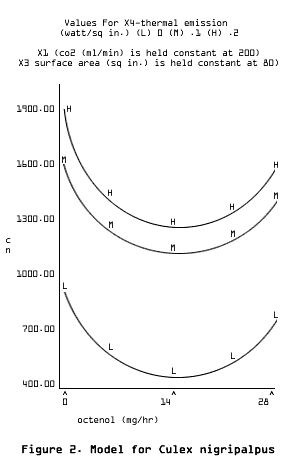“Skeeter Defeater,” Organic Gardening
Put Away That Malathion Mayor Giuliani!!!!
Mosquitoes made headlines in New York City last summer when they caused an outbreak of a rare form of encephalitis (inflammation of the brain), prompting controversial aerial sprayings of malathion and other toxic Even when they’re not transmitting life-threatening diseases, mosquitoes can certainly make life outdoors unpleasant. Now the patented Dragonfly Mosquito-Eater gives homeowners a new nontoxic alternative to chemical spraying.
The design of the Dragonfly (aptly named after Mother Nature’s best mosquito eater) is based on USDA research showing that mosquitoes and other biting insects are attracted to body heat, as well as to the carbon dioxide and octenol (a form of alcohol) that warm-blooded animals release when they exhale. Mosquitoes have ultrasensitive receptors that can detect these compounds from up to 100 feet away. The Dragonfly unit uses three attractants: A heat source is combined with a lure that releases both carbon dioxide and octenol. A specially designed grid surrounding the unit uses a low pulse of electricity to kill insects that come near it, without any annoying zapping noise or unsanitary spraying of insect parts and germs into the air.
Food for thought
Mosquitoes feed on flower nectar as their main food source.
Only females need blood meals to provide protein for development of their eggs.
The Dragonfly is made by BioSensory of Willimantic, Connecticut (860-928-1113; www.biosensory.com). The residential model sells for $280, plus shipping. (There is a professional model available for larger areas.) The unit should be at least 30 feet away from your home, positioned to intercept mosquitoes flying in from the most likely nearby habitat -swampy areas or shrubby woods.
The company also markets the Mosquito ‘Cognito, a $30 unit that can be used near outdoor living spaces to repel any mosquitoes that get past the Dragonfly. The ‘Cognito releases either a Citronella repellent or a new, more effective inhibitor called Conceal, a synthetic form of linalool, a nontoxic, naturally occurring compound used for food flavoring and perfumes.
We have reviewed the USDA research and the company’s literature, and we are impressed. Unlike so many products being sold these days, the Dragonfly and the Mosquito ‘Cognito appear to be solidly based on legitimate research. The explanatory information provided by BioSensory is some of the most complete, honest product literature we’ve ever seen. The Dragonfly is, admittedly, on the pricey side, but at least it promises to be effective, which is more than can be said for the millions of bug zappers that have already been sold. As we reported on page 65 of the September/October 1999 issue, numerous studies have shown that electronic bug zappers that use light to attract bugs are not effective against most mosquitoes, which are not attracted to the light.
Our message to New York Mayor Rudolph Giuliani: When the skeeters start biting again next spring think twice before ordering aerial assaults with toxic pesticides. We are concerned about keeping people safe from disease, too. But safer alternatives do exist.


 he format of Figure 2 is identical to Figure 1, with the exception that a different size visual target is used. In this case, the visual target was held constant at a surface area of 516 cm2 (80 in.2) simulating a small animal such as rabbit or woodchuck. This size visual target produced the largest collections of mosquitoes.
he format of Figure 2 is identical to Figure 1, with the exception that a different size visual target is used. In this case, the visual target was held constant at a surface area of 516 cm2 (80 in.2) simulating a small animal such as rabbit or woodchuck. This size visual target produced the largest collections of mosquitoes.